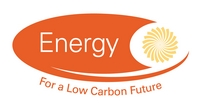Projects
Projects: Projects for Investigator |
||
| Reference Number | EP/G027633/1 | |
| Title | CAMBRIDGE UGTP WHOLE ENGINE COMPUTATIONAL AEROACOUSTICS CONSORTIUM | |
| Status | Completed | |
| Energy Categories | Energy Efficiency(Transport) 2%; Not Energy Related 96%; Fossil Fuels: Oil Gas and Coal(Oil and Gas, Oil and gas combustion) 2%; |
|
| Research Types | Basic and strategic applied research 100% | |
| Science and Technology Fields | ENGINEERING AND TECHNOLOGY (Mechanical, Aeronautical and Manufacturing Engineering) 100% | |
| UKERC Cross Cutting Characterisation | Not Cross-cutting 100% | |
| Principal Investigator |
Professor P. G. Tucker No email address given Engineering University of Cambridge |
|
| Award Type | Standard | |
| Funding Source | EPSRC | |
| Start Date | 09 June 2009 | |
| End Date | 07 December 2012 | |
| Duration | 42 months | |
| Total Grant Value | £90,277 | |
| Industrial Sectors | Aerospace; Defence and Marine | |
| Region | East of England | |
| Programme | NC : Engineering | |
| Investigators | Principal Investigator | Professor P. G. Tucker , Engineering, University of Cambridge (99.993%) |
| Other Investigator | Professor Dame A Dowling , Engineering, University of Cambridge (0.001%) Dr TP Hynes , Engineering, University of Cambridge (0.001%) Dr CA Hall , Engineering, University of Cambridge (0.001%) Professor R Cant , Engineering, University of Cambridge (0.001%) Dr S (Sergey ) Karabasov , Engineering and Materials Science, Queen Mary, University of London (0.001%) Professor N Peake , Applied Maths and Theoretical Physics, University of Cambridge (0.001%) Professor W (Bill ) Dawes , Head office, Cambridge Flow Solutions Ltd (0.001%) |
|
| Web Site | ||
| Objectives | ||
| Abstract | With the projected demand for air transport set to double the world aircraft fleet by 2020 it is becoming urgent to take steps to reduce the environmental impact of take off noise from aircraft. In worst case noise can be more than just annoying, potentially being a contributory factor towards illnesses such as hypertension. Hence, the Advisory Council for Aeronautics Research in Europe (ACRE) has set the target of reducing perceived noise levels by 50% by the 2020.A key noise source is caused by the powerfully turbulent flow field generated at the high Reynolds numbers associated with aerospace flows. Hence, the acoustician must be able to accurately predict the turbulent flow field, and its interaction, where necessary with combustion, and then manipulate it to reduce the acoustic signature. The only means of reliably predicting turbulence is through direct or near direct simulation of the Navier-Stokes equations. This, at realistic Reynolds numbers needs massive computational resources. Hence, access to the HECToR resource is sought to study various aeroengine flows/systems to produce noise reductions. The areas considered include the engine inlet rotor/fan zones, the combustor, turbine and exhaust | |
| Data | No related datasets |
|
| Projects | No related projects |
|
| Publications | No related publications |
|
| Added to Database | 22/12/08 | |



